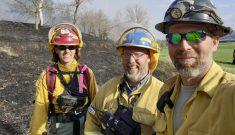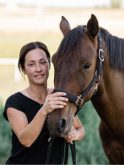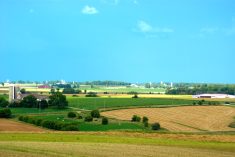Jesse Wente shared some hard truths in his Canadian Centre for Food Integrity keynote presentation last month called Growing Organic Inclusion.
Perhaps one of the biggest takeaways for me was how much we still need to unpack, then accept and acknowledge about ourselves, before we can critically analyze barriers and begin formulating solutions to be a more inclusive industry.
And this is the hardest lesson for me. I like solutions. I want to jump into action. Jesse reinforced what I have also been reading in Sharon Nyangweso’s work: starting with action is setting up for failure. And more importantly, it’s setting those you wish to engage up for failure.
Read Also

Defence investments could benefit agriculture
A bump in Canada’s NATO spending commitments could lead to infrastructure investments that would benefit rural areas
Becoming inclusive takes a commitment from the top that is woven throughout an entire organization. It requires collecting and measuring data, setting targets and investing significant resources to then identify and address the barriers.
It requires organizational transformation and transformation is not a comfortable word for an industry rooted in tradition.
A large amount of agriculture’s traditions are based in how our place in the world came to be. Unpacking this forces us to face some difficult truths:
- Land ownership is a privilege that was originally granted based on where we came from and the colour of our skin.
- The system we have lived and operated in was designed by white settlers, and specifically men, to benefit other white men.
- If we want to lay blame, we can blame the system, but as one who has benefited from it, then it’s also on us to start to change it.
I know this sounds radical to many, but it’s critically important to understand. If we want to attract and retain people from diverse backgrounds to agriculture then we have to change.
We have to make a conscious and concerted effort to understand how our system excludes these people and work to change that.
This will happen on two fronts, at a wider industry level and at the farm level.
I don’t believe one can do it without the other. The value chain that supplies and processes farmers’ production is inextricably linked to the farm. The perception of farmers is the bedrock of public trust in agriculture.
Systemic change at the farm level is fundamentally more difficult.
Farming is rooted in land ownership. Land is a finite resource. Access to it is largely impossible except for those who already have it or have tremendous wealth.
As a student in the Fanshawe Ag Issues class pointed out to me recently, diversifying agriculture is going to be very difficult as long as land access is the foundation of our system.
She is right.
It’s worth noting when you look at the innovation happening in food production and non-land based agriculture, there is far more diversity. Have the barriers of our system forced these bright minds to think outside the land to create alternative forms of agriculture? It’s worth considering.
Embracing non-traditional forms of agriculture as a means to increase membership in commodity groups and attract new people to achieve diversity goals could still be a stretch though.
So what can farm groups do if they are ready to embrace systemic change but have no idea where to start?
As my friend Maureen says, start where you are.
Gather the data. Yes, it will tell you what you already know — your membership is pretty white and mostly male. But it also will give you a starting line from which you can measure and focus your efforts. And you want to focus on the minorities.
Maybe 25 per cent of your membership is women.
A portion of your membership identifies as LGBTQ+.
What can you do to ensure your organization is a safe place for them to show up as themselves and be respected?
This is not to take away from the important work to fight anti-Black and Indigenous racism. Jesse Wente reminded us each community requires specific focus and that is also work that must be done. But it’s an evolution.
When you hone in on creating a more inclusive environment for those marginalized people within your current network, you will also uncover ways you can better engage those outside it.
As we talk about mental health in agriculture, the most important thing you can do to support mental health is to create a culture where people feel safe and they can be their true selves. There’s an awful lot we don’t have say over when it comes to mental healthcare, but this is fully within our control.
Jennifer Christie grew up on a grain and dairy farm, worked in agriculture and is the chairperson of the Agricultural Women’s Network.














